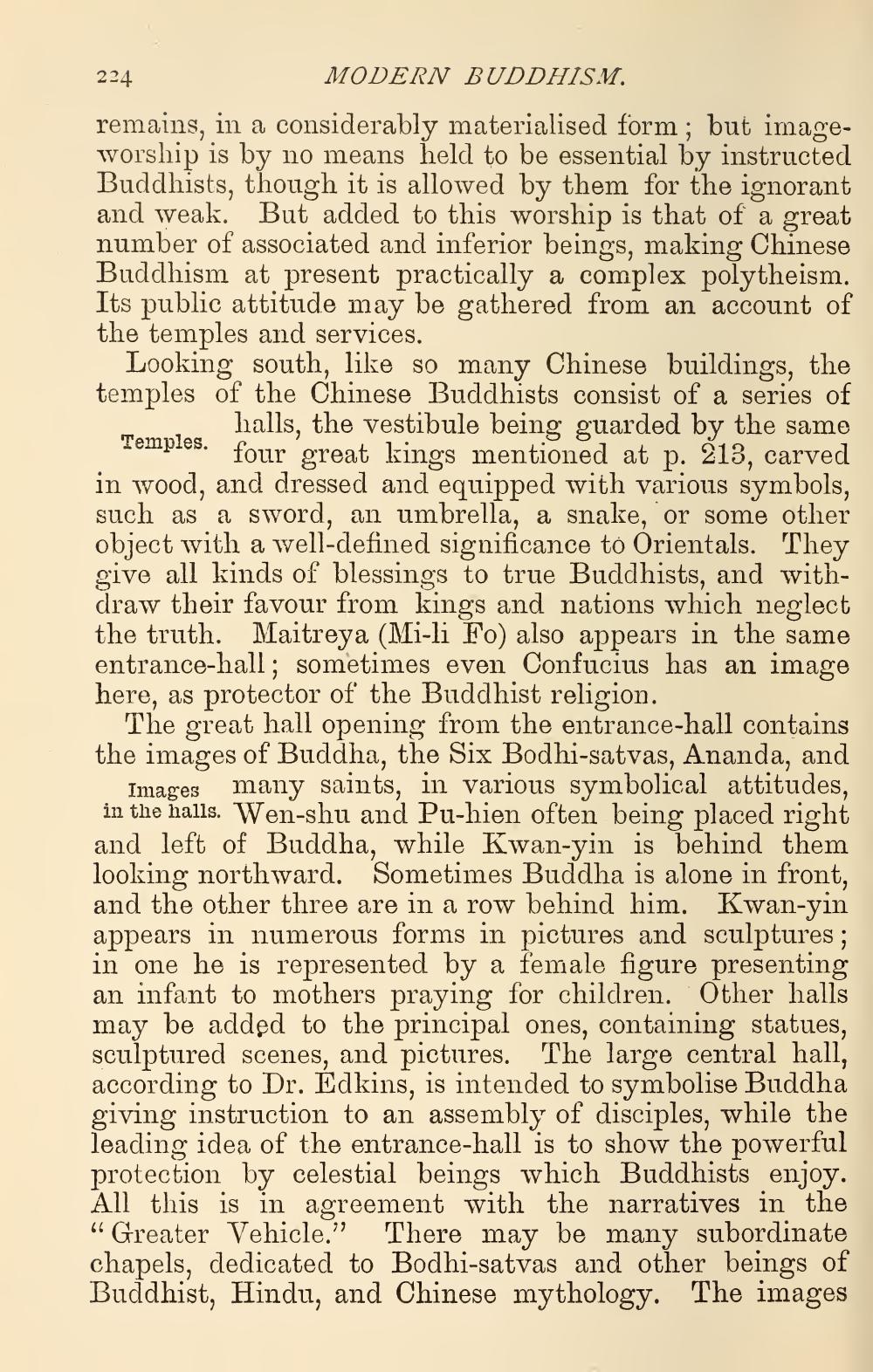________________
224
MODERN BUDDHISM. remains, in a considerably materialised form ; but imageworship is by no means held to be essential by instructed Buddhists, though it is allowed by them for the ignorant and weak. But added to this worship is that of a great number of associated and inferior beings, making Chinese Buddhism at present practically a complex polytheism. Its public attitude may be gathered from an account of the temples and services.
Looking south, like so many Chinese buildings, the temples of the Chinese Buddhists consist of a series of
halls, the vestibule being guarded by the same temples, four great kings mentioned at p. 213, carved in wood, and dressed and equipped with various symbols, such as a sword, an umbrella, a snake, or some other object with a well-defined significance to Orientals. They give all kinds of blessings to true Buddhists, and withdraw their favour from kings and nations which neglect the truth. Maitreya (Mi-li Fo) also appears in the same entrance-hall; sometimes even Confucius has an image here, as protector of the Buddhist religion.
The great hall opening from the entrance-hall contains the images of Buddha, the Six Bodhi-satvas, Ananda, and
Images many saints, in various symbolical attitudes, in the halls. Wen-shu and Pu-hien often being placed right and left of Buddha, while Kwan-yin is behind them looking northward. Sometimes Buddha is alone in front, and the other three are in a row behind him. Kwan-yin appears in numerous forms in pictures and sculptures; in one he is represented by a female figure presenting an infant to mothers praying for children. Other halls may be added to the principal ones, containing statues, sculptured scenes, and pictures. The large central hall, according to Dr. Edkins, is intended to symbolise Buddha giving instruction to an assembly of disciples, while the leading idea of the entrance-hall is to show the powerful protection by celestial beings which Buddhists enjoy. All this is in agreement with the narratives in the “Greater Vehicle." There may be many subordinate chapels, dedicated to Bodhi-satvas and other beings of Buddhist, Hindu, and Chinese mythology. The images




